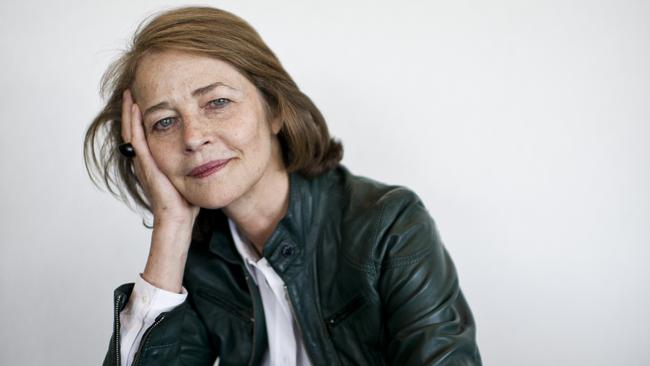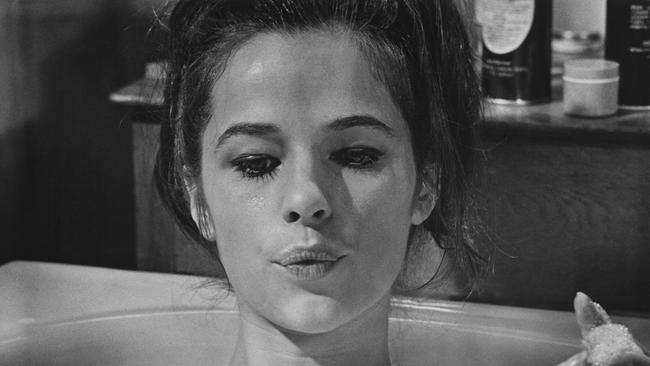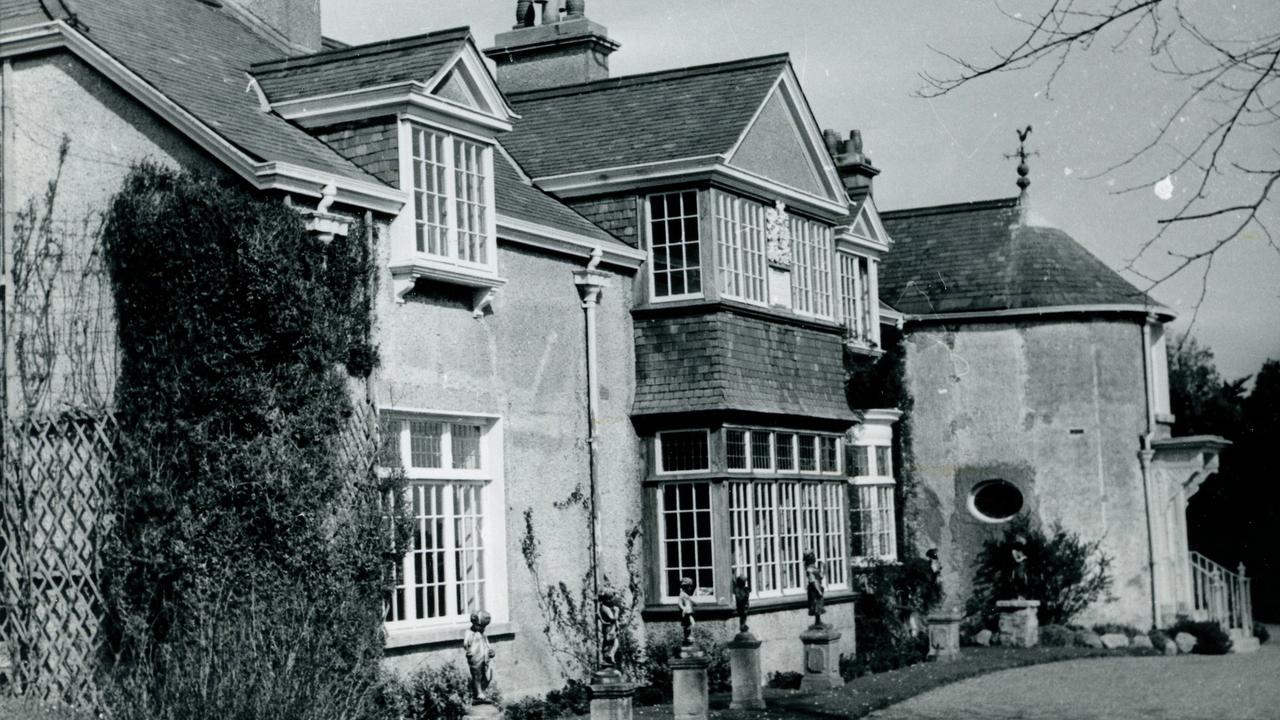Charlotte Rampling’s memoir a sentimental journey with individuality
Charlotte Rampling’s weird little memoir is not about her career or lovers; instead it’s an intimate family portrait.

It’s the better part of 50 years since Charlotte Rampling made The Damned for Luchino Visconti, alongside some of the better actors on earth, such as Dirk Bogarde and Ingrid Thulin, and even longer since she appeared as the attractive hanger-on in Georgy Girl, with Lynn Redgrave and James Mason. She was a beauty then and she is a beauty now, but Rampling has always been an actress’s actress.
When we see her, more recently, in Francois Ozon’s drama Swimming Pool, or as the old mother in Fred Schepisi’s adaptation of Patrick White’s The Eye of the Storm, or as the ageing QC in television series Broadchurch, or wrestling with a lifelong marriage in 45 Years with Tom Courtenay, we know we’re watching a mature actress who is and isn’t continuous with the young star of ’Tis Pity She’s a Whore or The Night Porter from the 1970s. She willforever make people of a certain age quiver (and maybe their grandchildren).
When she was in this country I saw her a couple of times, looking and sounding strikingly different on each occasion.
Once at a dinner, with little make-up and plainly dressed, she looked like Peggy Ashcroft in her later years. You might have thought she was a judge or someone important in Brussels. Then on the set of The Eye of the Storm or, rather, in her caravan — and after just looking into the storm before the rolling cameras — she looked dazzling and it was obvious her art was like champagne to her.
In phone interviews, she talks with an offhand English informality that, in a remote way, has been loosened by her long residence in Paris.

She acts as easily in French as English and her maturity, like Catherine Deneuve’s, is no drawback for French filmmakers and audiences. When she played Ranevskaya for Greek-Cypriot director Michael Cacoyannis in his 1999 film of The Cherry Orchard, we believed in the opulence and the spendthrift nature of the character’s past because we believed in Rampling’s detachment from her character’s glamour.
Now we have a memoir — which could as easily be called a prose poem or an essay — co-written with French author Christophe Bataille. Who I Am has nothing in common with any celebrity memoir, though its exoticism does dimly associate with the paradox of this perennially soaring 60s woman who seems to bear the scars of swinging London yet who belongs in Paris. Her sophistication is blatant, understated, nonchalant.
Hence this weird little book that is not about her brilliant career, and even less about her lovers and friends. It’s about families and secrets and shadows, about rise and fall and evasion, about the life of the memory, and the way the self seeks depiction and shuns it, how it displays its intimacies and delusions as so many enigmas.
It will make all sorts of readers — perhaps every sort of reader at the wrong moment — dismiss it as a sort of sub-Proustian reverie, at once dreary and wet in a deliberately simulated dark. To the tune of this:
No hint of trembling as you stand trembling in the galleries of the Louvre where La Tour and Fra Filippo Lippi dream. The Mona Lisa is looking at you through her bulletproof glass case. There’s no half-light here. Everything is hidden by the dazzling light of the photographer. Now you break into a smile. Where are the museum attendants, the works of art, the silk dresses, the togas and jewels, the symbols, the crucifixes and headdresses? Where is the history of art in all its infinite seriousness …
The Madonna, c’est moi.
Come and get me if you can.
Who I Am is coy about its non-disclosures yet it has its stabs, its pangs, its headlong rushes into the sort of intimacies that an Anglo-Saxon memoir would leave as so many bald facts. Rampling is the daughter of a woman who was an obsessive lovelorn teenager, who wrote of her crushes and murmurs of the heart (not least for the boy who would become Charlotte’s father) in violet ink in a childish hand in fancy notebooks (we get photographed examples).
After she died, Rampling’s father, Geoffrey, left his wife’s accumulated diaries out on the footpath for the garbage men to take away. How could he? How could he not? Eventually she bought them back from some scalper into whose hands they had fallen.
Her father was given by his parents — well, by his mother and stepfather — to his maternal grandmother to be brought up. There wasn’t much but the austerities of boarding school in practice. He went on to become a gold medal Olympic runner in Berlin in 1936. Though later, when he was broke, after the war, they discovered the gold was just coating; Hitler had cheated and had it made out of steel.
Rampling pere failed his breathing test for the RAF but became a colonel in the Royal Artillery as well as the star of the relay team. The family moved home every two years and all the friends of Charlotte and her elder sister Sarah were lost, as friends are when you move to a new place in childhood.
The text of this memoir is punctuated with old black-and-white photographs drenched in nostalgia, found objects as filled with unknowable longing as these things can be.
Mystery surrounds Sarah, who went off to South America, married a man there, to everyone’s amazement, and died there not long after. We get to hear more of the story as this strange little book glides like a kite in the wind and, god knows, it is forlorn enough.
It’s an odd excursion, Who I Am, a sentimental journey by someone so little addicted to disclosure that the confessional inevitably comes to be her only mode.
It is also a book full of French fragrance and a high degree of arabesque — with Bataille’s ornamentations sometimes at the edge of translatability — which is also a weirdly Gallic elegy for Anglo-Saxon reticence.
The pictures, from the cat-eyed, freckle-faced girl on the cover to the grand duchesse on the back, are haunting and poignant (with that naked poignancy of time lost), just as the text, with its elegancies and artifices, has the irrevocable indiscretion of a memoirist who wants to avoid anecdote so that all she can do is lay things bare.
It’s a strange book, a rich book, a lame book that has both the lameness and the splendour of coming from the heart of an artist who is utterly individual but is at home in a different field.
Peter Craven is a cultural critic.
Who I Am
By Charlotte Rampling with Christophe Bataille
Icon Books, 112pp, $24.99 (HB)


